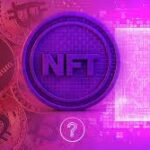Once a curiosity on the fringes of the crypto world, NFTs have evolved into a full-blown digital asset class. But with meteoric highs often followed by deep corrections, the NFT market is proving to be as volatile as it is revolutionary. The NFT Boom: When Digital Art Became Gold The non-fungible token (NFT) market exploded …
From Bull Runs to Bear Phases: The Volatility of NFT Markets

Once a curiosity on the fringes of the crypto world, NFTs have evolved into a full-blown digital asset class. But with meteoric highs often followed by deep corrections, the NFT market is proving to be as volatile as it is revolutionary.
The NFT Boom: When Digital Art Became Gold
The non-fungible token (NFT) market exploded in early 2021, with headlines dominated by multimillion-dollar art sales, celebrity endorsements, and blockchain-based collectibles. Platforms like OpenSea, Rarible, and Foundation saw record trading volumes, while Beeple’s Everydays: The First 5000 Days sold at Christie’s for over $69 million—a cultural watershed moment for Web3.
But like all financial manias, the exuberance was met with market corrections. Prices of many NFT projects tumbled, interest waned, and skeptics emerged in droves. This boom-and-bust cycle isn’t unique to NFTs—it echoes patterns seen in stock markets, cryptocurrencies, and even the dot-com era.
So, what drives this rollercoaster ride in the NFT space? And can investors, creators, and collectors navigate it more strategically?
Understanding NFT Market Volatility
NFTs are built on blockchain technology, most commonly Ethereum, and are unique digital tokens that prove ownership of a digital asset—artwork, video, music, or even a tweet. But unlike fungible tokens like Bitcoin or ETH, NFTs derive their value from scarcity, cultural relevance, and community hype, making them more subjective in valuation.
Key Drivers of NFT Volatility:
- Hype Cycles and FOMO
Bull runs are often fueled by hype. Celebrity endorsements (Snoop Dogg, Paris Hilton), influencer tweets, and viral success stories create a sense of urgency. During peak moments, buyers rush in driven by FOMO (Fear of Missing Out), pushing prices to unsustainable levels. - Speculation Over Utility
Many early NFT buyers weren’t collectors—they were speculators. Projects with little long-term utility were flipped quickly. Once sentiment cooled, so did demand, leading to sharp corrections. - Lack of Liquidity
Unlike cryptocurrencies, NFTs are illiquid. Each token is unique, and selling one requires finding a buyer who agrees on its value. During bear phases, this becomes even more challenging. - Macro and Crypto Market Correlations
NFT markets are not isolated. When broader crypto markets decline, NFT prices often follow. The 2022 crypto winter, for instance, crushed both fungible and non-fungible assets. - Platform Risks and Gas Fees
Ethereum gas fees have also impacted NFT transaction costs. In bull phases, high fees don’t deter users. In bearish periods, they become a significant barrier to entry.
From Peak to Plunge: Lessons from the NFT Boom
The NFT boom taught us that community is currency. Projects that built strong, engaged communities—like Bored Ape Yacht Club (BAYC), Pudgy Penguins, or World of Women—fared better during downturns.
But it also revealed weaknesses:
- Rug pulls and scams became more frequent.
- Oversupply flooded the market with low-effort, copycat projects.
- Speculative greed often overshadowed artistic or utility-driven value.
Case Study: Bored Ape Yacht Club
BAYC began as a profile picture (PFP) project but evolved into a full-blown ecosystem. Holders got access to exclusive events, airdrops, and the Otherside metaverse. This shift from static art to dynamic utility helped BAYC maintain relevance even during bearish periods.
NFTs in the Bear Market: Crash or Correction?
The NFT downturn of late 2022 into 2023 was dramatic. Trading volumes plummeted over 90% from all-time highs. Floor prices for even popular collections fell. Skeptics declared the death of NFTs. But savvy observers saw something else: maturation.
In the bear market, serious builders kept building. Artists shifted focus from hype to storytelling. Brands like Nike, Starbucks, and Adidas began experimenting with NFTs tied to loyalty programs, gaming, and digital wearables.
What’s Thriving in the Bear?
- Utility-Driven NFTs: Projects offering real-world benefits (tickets, memberships, gaming assets) are gaining traction.
- NFT Finance (NFTfi): Collateralized NFT lending and fractional ownership are evolving financial models in the space.
- Interoperability and Layer 2 Scaling: With upgrades like Ethereum’s Dencun and scaling solutions like Polygon or Arbitrum, transaction costs are reducing—removing key friction points for NFT adoption.
Navigating Volatility: For Collectors and Investors
NFTs are still speculative, but not without strategy. Here are some tips for navigating this volatile space:
- Focus on Fundamentals
Look for teams with a clear roadmap, transparency, and a genuine community—not just pixelated art. - Diversify Your Portfolio
Don’t pour all your ETH into one project. Explore different use cases—art, gaming, DeFi NFTs, music NFTs. - Engage With the Community
Active Discords, Twitter Spaces, and ongoing updates are signs of project vitality. - Avoid the Pump-and-Dump Traps
If a project’s hype outpaces its roadmap, caution is warranted. Avoid blindly following influencers. - Stay Educated
The NFT space is evolving. Keep up with trends, tech developments, and legal frameworks to make informed decisions.
Looking Forward: Are NFTs Here to Stay?
NFTs are more than a passing phase. While the speculative layer may wax and wane, the underlying technology is foundational to digital ownership in Web3. We’re witnessing a shift where:
- Creators reclaim royalties.
- Users own their digital identities.
- Brands redefine customer loyalty.
From art to real estate, gaming to intellectual property, the applications of NFTs are growing—and volatility may just be the price of innovation.
Final Thoughts
The NFT market’s volatility is not a flaw—it’s a feature of emerging technology. Like any frontier, it rewards the bold but punishes the unprepared. For creators, investors, and users willing to ride the wave with research and responsibility, the rewards can be more than financial—they can be cultural, social, and transformative.
As we move forward into the next phase of the NFT era, one thing is clear: bear or bull, the story of NFTs is far from over.







